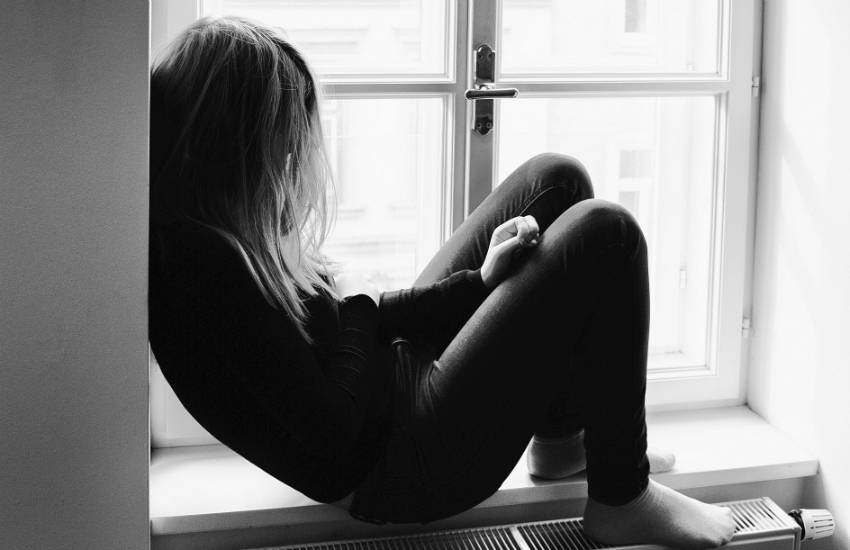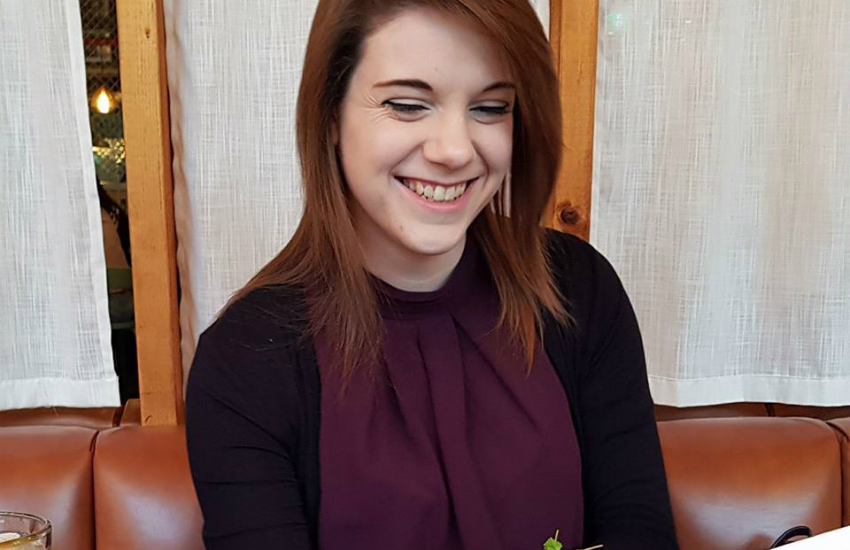These aren’t just statistics – Becca has her own experience | Photo: Becca Hall
I began self-harming when I was 14.
I attended a very conservative high school in a small North Wales town, where everyone was white and nobody was gay. One guy in my year came out in Year 10 (9th Grade) and got so badly bullied that he transferred to a different school.
So when I started getting feelings for girls, I couldn’t handle the thought that I might receive the same kind of treatment. I hated what I was feeling, who I was, and I punished myself for it. I pushed the feelings deep down and tried so hard to ignore them.
Then the self-harm started. I began by hitting and scratching myself, which escalated into cutting. I overdosed on painkillers and, since I’m diabetic, my insulin injections. I was trying to deal with all these horrible thoughts and emotions, and it started fairly minor and infrequent.
But as my mental health began to spiral, the damage I was doing became worse. I hid away from everybody to hide my self-harm, and in turn hid other aspects of myself from those around me – including my sexuality.
Of course, this only fueled my self-hatred even further and the extent I was hurting myself became more extreme.
Shocking statistics
Recent NHS figures revealed that the number of girls under 18 being given hospital treatment following self-harm has nearly doubled in England compared to 20 years ago. Rates amongst the LGBTI community are alarmingly higher than the general population, with government figures from 2017 suggesting that 52% of LGBTI young people have engaged in self-harm at some point.
This begs the question: how many of these young girls identified as LGBTI, and what could we be doing to help them?

The statistics will shock everyone – but are people being left behind? | Photo: Pixabay
I went to A&E numerous times as a result of self-harming. Not for medical assistance: I became a danger to myself and I needed help.
At one point I was even admitted to a psychiatric ward, but I was only there one night because someone ‘more sick’ came in and they needed my bed. I also received psychological help for a number of years but not once, through all the psychological and psychiatric assessments, CBT and DBT therapies, did anyone ever ask about my sexuality. They didn’t even consider the possibility that struggling with sexuality could be a contributing factor to what I was going through.
Will self-harming LGBTI people fall through the cracks?
Being able to talk to someone in a confidential and safe environment would almost certainly have allowed me to accept who I am much sooner, which would no doubt have diminished the destructive behaviors I turned to.
With time and help, I have come through my battle with self-harm and mental health problems, but evidence tells us that more and more people are still right in the trenches. More resources need to be available to LGBTI young people for them to explore, educate and accept their sexuality rather than believing that what they feel is ‘wrong’.
No one should turn to self-destruction just to cope with their life.
Need support? LGBTI helplines for those in crisis or seeking advice
Follow Becca Hall on Instagram: @beccahall2
More from Gay Star News:
UK universities failing LGBTI students mental health – 4 in 5 are struggling
Rise in bullying of young LGBTI people increases suicide risk







